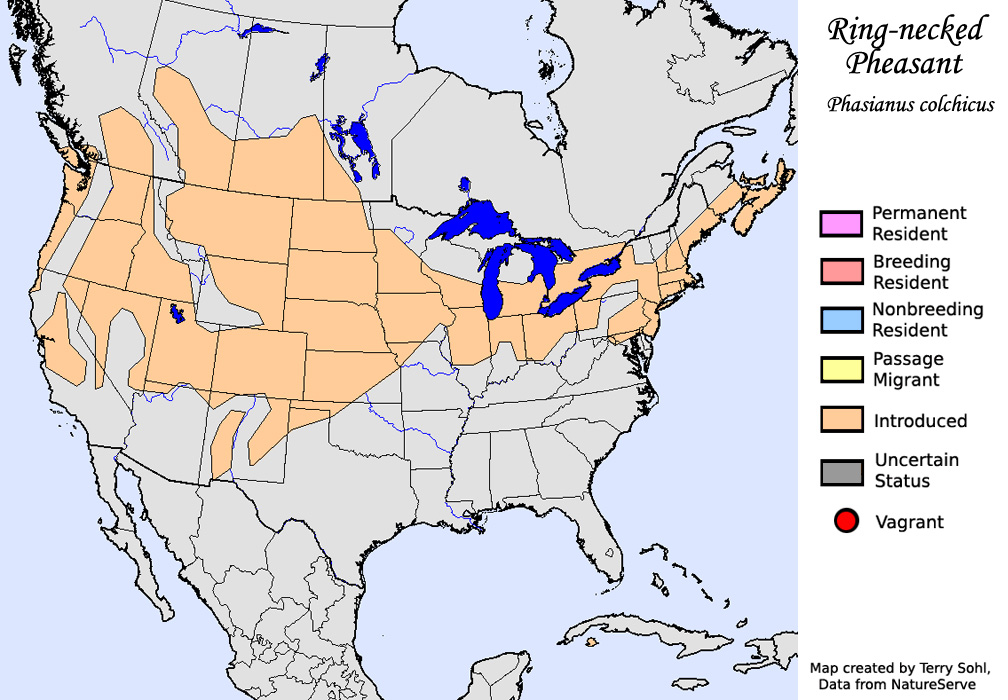Habitat And Geography
The ring-necked pheasant is a ground-dwelling upland game bird
that originated from Asia, but is now found throughout most of
the world due to human introduction. The ring-necked pheasant
has been introduced into various parts of the world due to its
tasty meat and its resistance to parasites and diseases that are
common in most upland game bird species (Clark et al. 2008).
Pheasants, like most upland game birds, reside in diverse
habitats that consist of anything from woodlots to agricultural
fields. Some examples of the ring-necked pheasants habitat are
corn, soybean and hay fields, grassy ditches, overgrown fence
lines, moderate grassy swamps, and anything else that gives the
pheasants cover, while still allowing them to move quickly. Due
to pheasant's habitat consisting mostly of agricultural fields,
their amount of suitable habitat significantly fluctuates
throughout the year.
For example, the ring-necked pheasants have
their maximum suitable habitat in the summer and fall, when the
crops are still in the fields and minimum suitable habitat in
the winter and spring, when the crops are harvested off of the
fields. This large fluctuation in suitable habitat causes the
pheasants home range to significantly increase in summer and
fall and decrease in the winter and spring (Riley and Schultz,
2001).
Like most
upland game birds, the ring-necked pheasant has a hard time
finding suitable habitat during the winter months, because they
rely heavily on agricultural fields for cover during the summer
and fall. Some suitable habitats that provide cover to the
ring-necked pheasants during the winter are overgrown fence
rows, abandoned farmsteads, and cattail marshes (Clark et al.
2008). Due to farming technology, larger farms and equipment,
pheasant habitat has become drastically reduced throughout the
world, but in the United States in particular. Larger farming
equipment has led to fence lines being cleaned up between fields
as well as old abandon farms and buildings. While this provides
more agricultural habitat for the pheasants during the summer
and fall, it drastically reduces their winter habitat, which is
crucial to their survival.

The
ring-necked pheasant shares its habitat with a wide variety of
organisms because of its habitat next to agricultural fields,
which many animals rely on as a food source. They share
their habitat with numerous upland game bird species such as the
ruffed grouse, prairie chicken,
quail, and partridge, just to
name a few. Some other organisms that pheasants share their
habitat with are insects, which are a main food source for them.
Other organisms that the ring-necked pheasant shares its habitat
with, that it wishes it wouldn’t have to, are foxes, skunks,
coyotes,
hawks, owls, and snakes. All of these organisms are
common predators to the pheasant.
Do you know why the ring-necked pheasant is such a popular game-bird? Click here to find out on the Adapations page.
